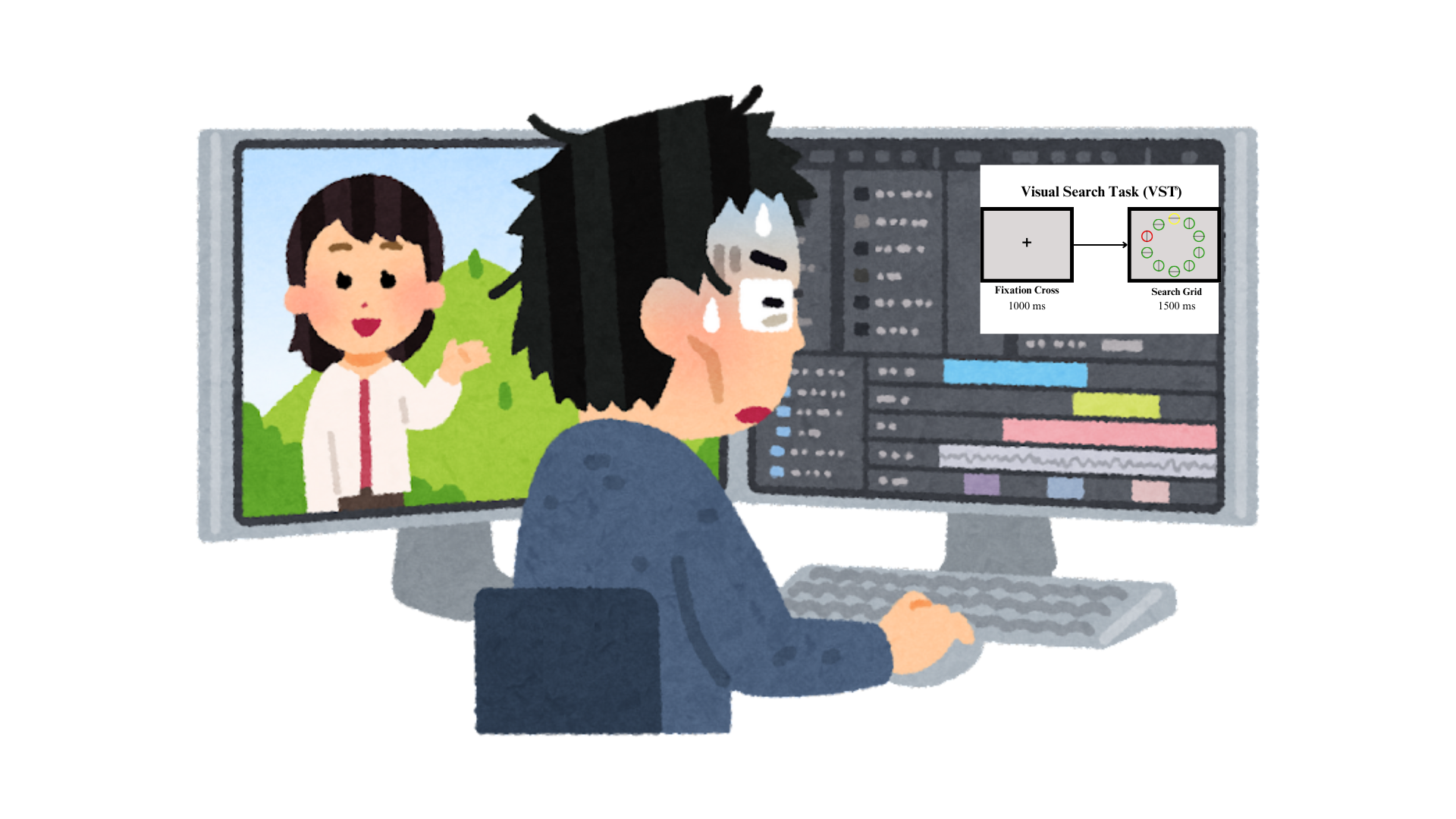Queen’s Attentional Dynamics Laboratory
Studying the socio-cognitive neuroscience of attention
Our Research
Our lab studies the dynamics of attention, which captures how attentional processes ebb & flow over time, resulting in differences in performance and separating the unique factors that make your attentional experience different from others.
To explore this, we use behavioural experiments, collaborative activities, eye tracking, EEG, & fMRI to uncover attentional dynamics within social situations, across internal thoughts, & in digital environments.
TEMPORAL DYNAMICS OF ATTENTION
Within Social Situations
Our attention often gravitates towards social information like people, faces, and eyes due to their inherent importance within our everyday lives. However, a key question that we have yet to answer is what properties control how and when attentional dynamics manifest in social settings.
TEMPORAL DYNAMICS OF ATTENTION
Across Internal Thoughts
Our attention often fluctuates between our external environment and our internal thoughts. Despite the frequent occurrence of these shifts though, we still do not have a complete understanding of why attentional dynamics occur and how and when they impact performance outcomes.
TEMPORAL DYNAMICS OF ATTENTION
In Digital Environments
Our attention is often studied in controlled laboratory environments, which typically simplifies the rich diversity of attentional dynamics that we typically find within real, online, and virtual contexts.
Recent Publications
Let’s face it, we all scroll through our phones while watching TV. Our latest review proposes a model that predicts when we’re likely to engage in media multitasking by accounting for both stable and changing influences, offering a promising approach.
Can you remember when your attention drifted away during an activity, such as a Zoom call or lecture video? Our latest article explores this phenomenon using a new method to explore previous engagement, revealing surprisingly detailed memories of prior attention states.
Online studies offer flexibility, but at a cost: nearly 40% of participants multitask during data collection. Our latest article explores how off-task behaviour, like smartphone use, may affect what we’re really measuring.







